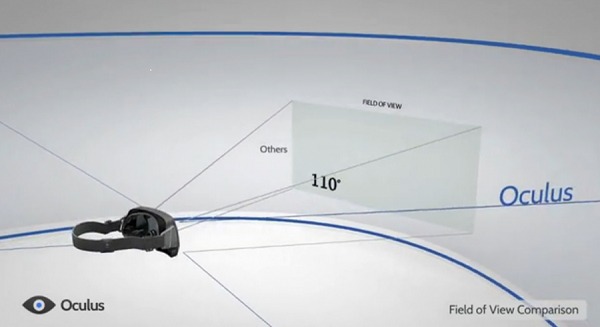The Oculus Rift made waves with its Kickstarter campaign, amassing a huge amount of $2.4 million dollars before it finally ended. With several of its development donation tiers bought out, and the more expensive ones purchased multiple times, it’s clear that developers are looking forward to what this 3D simulator has to offer. It probably has more development support than some of the current handheld consoles. However, what exactly gives it the upper hand over consoles, especially as we approach the next generation? The answer is more surprising than you think.
The Oculus Rift has the disadvantage of being incredibly gaudy and not very portable—although it will be compatible with smart phone and tablet devices, you can’t exactly walk through a street while playing a game with it. However, it’s an easy way to integrate 3D support without headache-inducing tricks like the 3DS uses or blurry rendering like typical stereoscopic 3D entails. It does not have very intense graphics—the resolution is quite small—but this only serves to make it more appetizing to developers. The smaller the resolution, the easier it will be for them to seamlessly manage Oculus Rift compatibility for their game. It also reduces lag time between the console and the screen, adding to the 3D immersion.
Although the application was somewhat late to release its latest press release, it’s understandable for a new and suddenly successful company to take their time and sort things out. Their release details the plan of action for the Oculus Rift, from initial development to sending out copies entirely. While the development release was delayed, they ran into some unexpected problems (such as needing a new screen entirely), and needed some time to adjust their product before sending it to developers. They should still have it in their hands by March of 2013, which gives them ample time to inspect the system and release their games during Summer or the holidays of 2013.
While that schedule pitfall may be concerning, the Oculus Rift is still incredibly attractive to developers. The main reason it has an advantage over consoles is because it is not tied to any console whatsoever—it is more of a monitor than anything, which means it can be used for anything with a video output that plays compatible games. This means that it can be used for the PC, smartphones, tablets, any current gen consoles, and any next-gen consoles. Even if this console generation ends unexpectedly soon, the Oculus Rift will still be able to display next-gen games. It may not have next-gen resolution, but it does offer impressive immersion for at-home consoles.
Its compatibility with smartphones and tablets is just icing on the cake. With several high-profile games already announced for Oculus Rift compatibility and the ease it takes to develop a compatible game for it, the Oculus Rift has a lot going for it. It’s not tied to consoles and isn’t affected by console wars, and virtually anyone with a gaming device will be able to use it. This gives it the largest customer base out of any console peripheral and a huge advantage as the next generation rolls around.


hell yes. want want want